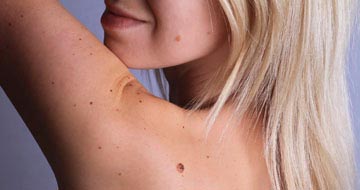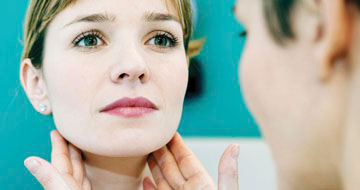Keloid Scarring
What is Keloid?
Keloid is scar tissue which overgrows and extends over the normal border. They are more common on areas with little fat like the ear-lobes, chest and neck but they can occur anywhere on the body. Keloid scars can be unsightly, itchy and uncomfortable, particularly when they first appear.
A keloid scar is shiny, raised and rubbery. They can spread far beyond the margins of your original scar. The scar can be skin-coloured or it may be pink, red or dark and more pigmented than your normal skin. Keloid can develop from surgical scars, but they can also grow from minor wounds like piercings or pimples. They may develop many months after the initial injury.
Keloid is more common in dark skins, in people with a family history of keloid and in younger people.
What’s the difference between keloid and hypertrophic scars?
Hypertrophic scars are enlarged scars, they can be raised, red and uncomfortable - but they don’t extend over the usual scar border.
Silicone dressings
Your consultant can apply silicone gel dressings to the scar. Over several months these can flatten and soften keloid to give a better cosmetic appearance. The dressings can also relieve any pain and itchiness.
Dressings need to be worn daily for 12 hours for several months to have an effect. Your consultant will provide replacement sheets, but you can also wash and reuse the dressings.
Steroid tape
Daytime dressing with innovative tape that is impregnated with steroid can shrink keloid scars. The steroid tape can reduce inflammation and flatten the scar, but won’t get rid of it totally.
Your consultant will prescribe the specialist tape, which you should wear for 12 hours every day.
Steroid injections
Your consultant can inject corticosteroid injections into keloid or hypertrophic scars to reduce swelling and flatten the scar.
You may need a course of up to three injections, four to six weeks apart, to improve the appearance.
Preventing scars
It’s much easier to prevent keloid than to treat an existing scar. If you’ve had scar problems in the past, there are several ways to protect your skin:
- Wear a pressure earring after a piercing.
- See your doctor or make an appointment at The Medical Chambers Kensington for effective acne treatment.
- Tell your surgeon that you are prone to keloid before surgery.
- If you have a wound keep it clean, then apply petroleum jelly and a bandage so that it stays moist as it heals.
- When the wound has healed, apply silicone gel or sheet dressings daily to prevent keloid.
- Apply sunblock.
- Seek medical help if you have a significant cut or burn.











